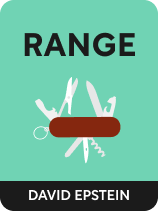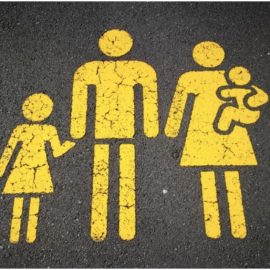

This article is an excerpt from the Shortform book guide to "Range" by David J. Epstein. Shortform has the world's best summaries and analyses of books you should be reading.
Like this article? Sign up for a free trial here .
Why is it more important for schools to teach critical thinking skills rather than specialization? What proof is there that critical thinking is more important?
The modern education system focuses on teaching both grade school and college students specialized skills. This is especially apparent when you look at medical school students.
Here’s why schools should change the education system to include more critical thinking.
Unfortunately, We Still Teach Specialization
Unfortunately, despite the fact that specialization is becoming increasingly obsolete, our education system is more specialized than ever. Our modern education system fails to teach the most valuable skills—those required for critical thinking and problem solving. Epstein cites a study showing that, among college seniors, GPA has nearly zero correlation with critical thinking skills.
Specialization is rampant, especially in higher education. College students are taught how to successfully think within the bounds of one academic discipline, but it’s been shown that they struggle to apply similar ideas to new contexts. In Epstein’s eyes, they rely too heavily on tactics and not enough on strategy. In a world where three out of four undergraduates advance to a career unrelated to their major, narrow training in a single discipline is not good enough—colleges need to teach critical thinking.
Hyper-specialized higher education also results in scientific professionals that are far too specialized. Some still lack these basic critical thinking skills. Epstein recounts an example: When physicians and med students at a Boston-area hospital were given a simple, albeit counterintuitive problem involving calculating the probability of a patient having a certain disease, only about one in four got it right.
In the study, “Medicine’s Uncomfortable Relationship With Math,” subjects were told that there’s a false positive rate of 5% for a test for a disease that affects 1 in 1000 people. If someone tests positive, what’s the likelihood that person has the disease? 27 of the 61 respondents said “95%,” and only 14 gave the correct answer of around 2%.
| Why the Doctors Got It Wrong These results are baffling when you consider that these were medical professionals with degrees from Harvard and Boston University, who theoretically are dealing with problems like this every day. Attending physicians performed no better than the med students. Arguably, this mistake is rooted in an extremely common problem: Most people avoid thinking in base rates—the probability of something being true in the absence of any case-specific evidence. The medical staff being tested neglected to calculate that, out of 1,000 people, 50 will get false positives, while only one will actually have the disease. This tendency to avoid dealing in base rates contributes to a number of mental biases, as detailed in psychologist Daniel Kahneman’s Thinking, Fast and Slow. Consider this question: Julie read fluently when she was four years old. What do you estimate her college GPA will be? We assume that a relatively smart child will be a relatively smart adult, so she’ll probably have a GPA of 3.7 or 3.8. The more accurate way to estimate this fact, however, is to begin with base rates: The average college student’s GPA is 3.1, so you would need much stronger evidence to assume that Julie has a GPA of 3.8. |
Epstein cites esteemed microbiologist Arturo Casadevall, who argues that scientific progress is slowing as more students are pushed through higher education without having first learned to think critically. The number of retractions in scientific literature is increasing, indicating a growing inability to spot flawed research. Even though biomedical research funding has skyrocketed over the last 35 years, new discoveries have slowed.
But what would an education that emphasizes critical thinking look like? For a start, Epstein endorses Casadevall’s call for fewer required classes and greater opportunities for students to learn outside of their field.
Epstein cites a computer science professor who argues that the “computational thinking” required to code should be a part of the gen ed curriculum, as it’s a problem-solving framework that involves breaking down complex problems into solvable components.
To give another example of how critical thinking could be taught in schools, Epstein describes a valuable skill he learned in college: how to solve “Fermi problems.” Fermi problems are puzzles intended to test your estimation skills—for example, what is the mass of all automobiles scrapped in North America this month? You’re supposed to break down this problem into a series of rational assumptions. Roughly, how many people in North America own cars? How often does a car need to be scrapped? How heavy is the average car? Epstein argues that this process allows you to roughly know what statistics are reasonable and what aren’t, no matter what discipline you’re in.
| Measuring Critical Thinking in Schools The Collegiate Learning Assessment (CLA+), one of the most popular tests of critical thinking in higher education, provides us with insight as to which of these recommendations would be the most successful. The 90-minute exam tests students from around 200 schools across the United States, ranking them and comparing freshmen to seniors to determine how much students learn at each school. It requires students to analyze real-life research data and synthesize logical arguments based on a given set of evidence. The institution boasting the biggest improvement in critical thinking is Plymouth State University, a liberal arts school in Plymouth, New Hampshire. PSU faculty attribute this prestigious score to their focus on concrete problem solving across their majors. Students in a technical writing class, for example, were asked to design a new course on resumés and covers. They ended up conducting interviews with professors and students before condensing their research into a proposal. Students in a philosophy of law class were asked to conduct a mock trial of Lizzie Borden, an alleged ax murderer from 1892. This kind of problem lacks fixed instructions or a single definitive answer, and as such, more closely resembles problems in the real world. Big-name schools that scored low on the CLA+, including the University of Kentucky and the University of Texas at Austin, blamed the test itself and stopped using it. Seniors at those schools performed about as well as freshmen—and at UT Austin, they did slightly worse. To many, the lackluster value of large universities like this is not a surprise—43% of the general public no longer believes that a college education is a “good investment,” and one-third of millennials regret going to college themselves. Just as Epstein argues, many college graduates are suffering from a lack of emphasis on critical thinking. |

———End of Preview———
Like what you just read? Read the rest of the world's best book summary and analysis of David J. Epstein's "Range" at Shortform .
Here's what you'll find in our full Range summary :
- Why it's better to be proficient in a range of skills rather than becoming a specialist in one
- Why you're never “too late” to pursue something you’re interested in
- Why the nontraditional background of a generalist gives them an edge






